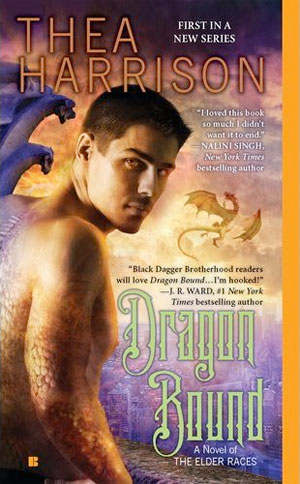
Dragons: The New Vampires?
Written by: Beth Woodward, CC2K Books Editor
 With Breaking Dawn: Part 1 (based on Stephenie Meyer’s book series) now in theaters, and True Blood and The Vampire Diaries (both of which are also based on books) now in their fifth and third seasons, respectively, I think vampires’ time as the go-to supernatural creature for pop culture is now nearing an end. So which preternatural population will take over next? Werewolves seem the obvious choice, but werewolves have been overexposed almost as much lately as vampires. (Thanks a lot, Taylor Lautner!) Zombies have been experiencing a surge in popularity of late, but zombies usually tend to be portrayed as straight-up monsters rather than complex, multi-faceted beings.
With Breaking Dawn: Part 1 (based on Stephenie Meyer’s book series) now in theaters, and True Blood and The Vampire Diaries (both of which are also based on books) now in their fifth and third seasons, respectively, I think vampires’ time as the go-to supernatural creature for pop culture is now nearing an end. So which preternatural population will take over next? Werewolves seem the obvious choice, but werewolves have been overexposed almost as much lately as vampires. (Thanks a lot, Taylor Lautner!) Zombies have been experiencing a surge in popularity of late, but zombies usually tend to be portrayed as straight-up monsters rather than complex, multi-faceted beings.
I nominate dragons.
Think about it. Depending on the story, dragons can be big and bad and dangerous or simply misunderstood. The mythology of dragons isn’t as hardwired into our brains as the mythology of vampires, leaving authors with a lot more world-building flexibility. Plus, there’s something inherently appealing about a gigantic, fire-breathing lizard.
I’ve discovered a few series lately that have breathed new life into the dragon myth. The first book in Thea Harrison’s Elder Races series, Dragon Bound, features a dragon hero who can shape-shift into human form. (As it’s a romance, the ability to shift into human form is pretty important. Otherwise it would be a little…icky.) Dragos has been alive longer than the human race has existed, and his morals don’t exactly fit into human standards. His solutions to problems tend to be of the “hunt it down and kill it” variety. He doesn’t understand love or relationships, not in a human sense, so his emerging feelings for the human/wyr (shifter) hybrid Pia manifest initially as intense jealousy and passiveness.
One of the things that I like about this book is that, in spite of Dragos’s ability to shift into human form, he doesn’t act like a human. He’s often angry and petty. He rules the wyr with an iron fist. A few months back, I lamented that many fantasy authors attempt to humanize inhuman characters too much, giving them characteristics that might be more palatable to the reader but don’t make sense given who and what they are. Harrison, wisely, stays away from this. You always have the sense that Dragos isn’t entirely comfortable with human emotions and ethics. Though he softens toward his half-human lover, to the rest of the world he’s still a scary, badass dragon. I also like that this series takes place in modern-times, rather than a full-on fantasy world. There’s something compelling about seeing a dragon—traditionally a creature of epic fantasy—in a more realistic, modern setting.
 G.A. Aiken’s Dragon Kin series, another recent discovery of mine, takes place in more of a traditional epic fantasy setting than Harrison’s does, a medieval-esque world where dragons and humans live side-by-side in an uneasy alliance. (“Uneasy” because the dragons sometimes have the tendency to eat the humans.) Aiken also employs a lot of humor in these books, making them lighter, faster reads than many epic fantasies.
G.A. Aiken’s Dragon Kin series, another recent discovery of mine, takes place in more of a traditional epic fantasy setting than Harrison’s does, a medieval-esque world where dragons and humans live side-by-side in an uneasy alliance. (“Uneasy” because the dragons sometimes have the tendency to eat the humans.) Aiken also employs a lot of humor in these books, making them lighter, faster reads than many epic fantasies.
Dragon, Actually, the first book in the series—and in my opinion, the best—focuses on a warrior named
Annwyl, better known to her compatriots as “Annwyl the Bloody.” After being nearly killed in a battle, she is rescued by a dragon named Fearghus, who is intrigued by Annwyl’s bravery and temper. Little does Annwyl know that the knight Fearghus has arranged to train with her is none other than Fearghus himself, in human form.
The Dragon Kin series is also romantic in nature, but Aiken also spends a lot of time developing the political and social structure of this world. It’s a bloody, hostile place, where dragons eat humans, humans hunt dragons, and gods interfere frequently in the lives of mortals. Yet in spite of this, it’s one of the more fun series I’ve read in awhile because it’s sexy and never takes itself too seriously.
I like the idea of seeing more dragons in fiction because I think there’s a lot you can do with them. So forget about those vampires. Let’s bring in the green, scaly guys.
